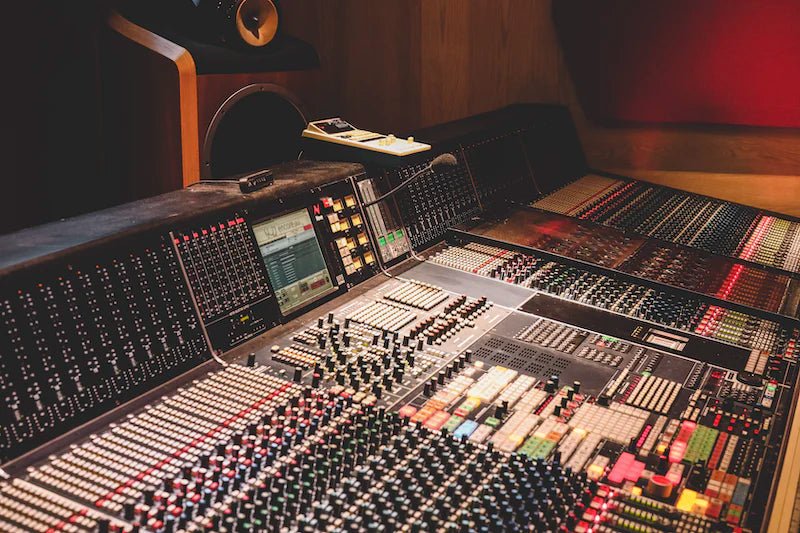All Music Genres
Music genres are a way to classify and group different types of music based on their characteristics such as form, style, and cultural influence. However, because music is an art form, genres can be subjective and often overlap with each other. Below we will define and explain all music genres and their sub-genres.
In recent years, there has been a surge in the number of new, crossover genres known as sub-genres. Understanding the various music genres and sub-genres can be crucial for effectively communicating your music to your target audience, building your fanbase, and navigating your music career. This article will provide a comprehensive list of music genres and their sub-genres, including information about their origin and examples of the music within each genre.
Pop Music
Pop is a genre of popular music that originated in the mid-1950s in the United States and the United Kingdom. This genre is known for its catchy choruses, melodic tunes, and hooks. Some pop sub-genres include Baroque Pop, Country Pop, Contemporary R&B, Dancehall Pop, Electropop, Pop Punk, Pop Rap, Pop Rock, and Worldbeat.
Rock Music
Rock music is a popular genre that originated as "rock and roll" in the 1950s in the United States. This genre is known for its emphasis on musicianship, live performance, and authenticity. Some rock sub-genres include Adult Alternative, American Rock, Arena Rock, Blues-Rock, Death Metal/Black Metal, Glam Rock, Hair Metal, Hard Rock, Jam Bands, Prog-Rock/Art Rock, and Southern Rock.
Hip-Hop/Rap Music
Hip Hop or Rap music is a genre that originated in the late 1970s among African American and Latino Americans. This genre is known for its stylized rhythmic music with a rhyming speech. Some Hip-Hop/Rap sub-genres include Alternative Rap, Bounce, Dirty South, East Coast Rap, Gangsta Rap, Hardcore Rap, Latin Rap, and West Coast Rap.
R&B Music
R&B (Rhythm and Blues) is a genre of popular African-American music that originated in the 1940s. This genre is known for its heavy, insistent beat and lyrics that focus on themes such as relationships, freedom, and aspirations. Some R&B sub-genres include Contemporary R&B and Disco.
Reggae Music
Reggae Music is a genre of music that originated in Jamaica in the late 1960s. It is characterized by its unique counterpoint between the bass and drum downbeat, and the offbeat rhythm section. The influence of traditional mento, as well as American jazz and rhythm and blues, can be heard in its sound.
Reggae Sub-Genres:
Dancehall, Dub, Roots Reggae, Ska, Mento, Reggaestep, Gospel Reggae, Contemporary Reggae.
Country Music
Country Music is a genre of music that originated in the United States, characterized by its roots in folk, blues, and western music. It often features ballads and dance tunes with simple forms and harmonies, accompanied by string instruments such as banjos, guitars, dobros, and fiddles, as well as harmonicas.
Country Sub-Genres:
Alternative Country, Americana, Bluegrass, Contemporary Bluegrass, Contemporary Country, Country Gospel, Honky Tonk, Outlaw Country, Traditional Bluegrass, Traditional Country, Urban Cowboy.
Folk Music
Folk Music is a genre of music that includes traditional folk music and the contemporary genre that evolved from it during the 20th-century folk revival. It typically features traditional, acoustic instruments and sounds.
Folk Sub-Genres:
Folk metal, Folk rock, Neo-Folk, Anti-folk, Indie Folk, Folk Punk, Contemporary Folk, Progressive Folk, Folk Country, Psychedelic Folk, Americana, Skiffle, Ballads.
Jazz Music
Jazz is a music genre with roots in West African culture that originated in the African American communities of New Orleans in Louisiana. It emerged during the Roaring Twenties and is known for its complex chords, swing, and blue notes, as well as frequent improvisations.
Jazz Sub-Genres:
· Acid Jazz: A genre that combines elements of jazz, funk, and acid house.
· Avant-Garde Jazz: A form of jazz that explores unconventional and experimental techniques.
· Big Band: A genre characterized by large ensembles with a strong brass section and arrangements.
· Blue Note: A subgenre of jazz characterized by its use of the "blue" notes.
· Contemporary Jazz: A genre that encompasses a wide range of styles and influences.
· Easy Listening: A form of jazz that is more accessible to a wider audience and often used as background music.
· Crossover Jazz: A genre that combines elements of jazz with other styles of music.
· Dixieland: A subgenre of jazz that originated in New Orleans and features a collective improvisation.
· Ethio-Jazz Fusion: A genre that combines elements of Ethiopian music with jazz.
· Hard Bop: A subgenre of jazz that incorporates elements of R&B, blues, and gospel.
· Latin Jazz: A genre that combines elements of jazz with Latin American rhythms and melodies.
· Mainstream Jazz: A term used to describe jazz that is widely accepted and popular among audiences.
· Ragtime: A form of jazz that originated in the late 19th century
Classical Music
Classical music refers to the art music that has its roots in the Western musical tradition, spanning from the 11th century to the present day. This genre encompasses both liturgical and secular compositions and has evolved over time to include a wide range of sub-genres.
Sub-genres of classical music include:
· Avant-garde: an experimental form of classical music that pushes the boundaries of traditional forms
· Baroque: a style of music popular in the 17th and 18th centuries characterized by ornate melodies and complex harmonies
· Chamber Music: music composed for a small ensemble of instruments
· Chant: a vocal style of music, often used in liturgical settings
· Choral: music composed for a choir
· Classical Crossover: a genre that fuses classical music with popular and commercial music
· Early Music: music composed before 1750, including medieval and renaissance period
· High Classical: music composed around the late 18th century, characterized by balance, clarity and restraint
· Impressionist: music composed in the late 19th and early 20th century, characterized by an emphasis on mood and atmosphere over traditional harmony and form.
· Medieval: music composed between the 5th and the 15th century
· Minimalism: a form of classical music that emphasizes simple, repetitive patterns
· Modern Composition: music composed in the 20th century and beyond, characterized by new harmonic and melodic language
· Opera: a genre of music that combines vocal and instrumental elements, often with acting and staging
· Orchestral: music composed for an orchestra, often without vocal accompaniment
· Renaissance: Music composed between the 14th and 17th century
· Romantic: Music composed between the late 18th century and early 20th century characterized by emotional expression and a focus on individualism
· Wedding Music: classical music that is used in weddings, such as Ave Maria and Canon in D.
Blues
Blues music is a genre and musical form that originated in the southern United States during the 1860s. It is rooted in African American culture, drawing inspiration from work songs, spirituals, and traditional rhythms. Blues music is characterized by its incorporation of complex chords, expressive lyrics, and deep-rooted themes.
Some sub-genres of blues music include:
· Acoustic Blues: a style that features unamplified instruments, such as guitars and pianos, and emphasizes traditional playing techniques.
· Chicago Blues: a style that developed in the mid-20th century and combines elements of jazz and gospel music.
· Classic Blues: a style that is considered the foundation of modern blues and is characterized by its use of simple chord progressions and lyrics that often dealt with personal struggles and hardship.
· Contemporary Blues: a style that incorporates modern musical elements and often explores themes beyond the traditional blues subject matter.
· Country Blues: a style that blends elements of country and folk music with traditional blues music.
· Delta Blues: a style that originated in the Mississippi Delta region and is characterized by its use of slide guitar, gospel-influenced lyrics, and a strong sense of personal expression.
· Electric Blues: a style that emerged in the mid-20th century and features amplified instruments, such as electric guitars, and a more upbeat and energetic sound.
Electronic Music
Electronic music is a wide-ranging genre that encompasses several popular and dance sub-genres. It is characterized by the use of synthesizers and other electronic instruments as the primary sources of sound. The genre is also referred to as electronic dance music (EDM) and includes sub-genres such as Breakbeat, Dubstep, Exercise, Garage, Hardcore, Hard Dance, Hi-NRG/Eurodance, House, Jackin House, Jungle, Drum N Bass, Techno and Trance.
Christian Music
Christian music is a genre of music that is written to express personal or communal beliefs related to the Christian faith. It encompasses a wide variety of styles, which vary depending on culture and context. Some of the different sub-genres of Christian music include CCM, Christian Metal, Christian Pop, Christian Rap, Christian Rock, Classic Christian, Contemporary Gospel, Gospel, Christian & Gospel, Praise & Worship, Qawwali, Southern Gospel, and Traditional Gospel.
Latino Music
Latino music is a broad term that encompasses various styles of music from Latin America, Spain, Portugal, and the United States. These styles are often inspired by older Latin American, Spanish, and Portuguese music genres, as well as music sung in the Spanish or Portuguese language. Some of the different sub-genres of Latino music include Alternativo & Rock Latino, Baladas y Boleros, Brazilian, Contemporary Latin, Latin Jazz, Pop Latino, Raíces, Reggaeton y Hip-Hop, Regional Mexicano, Salsa, Tropical, Bachata, Rumba, and Tango.
Alternative Music
Alternative music is a genre of music that is produced by performers who are outside of the mainstream. This type of music is often considered to be more eclectic, original, or challenging than most popular music. Alternative music has several sub-genres, including Alternative Rock, College Rock, Experimental Rock, Goth Rock, Grunge, Hardcore Punk, Hard Rock, Indie Rock, New Wave, Progressive Rock, Punk, Shoegaze and Steampunk.
New Age Music
New Age music is a genre that is designed to inspire, relax, and promote feelings of optimism. It is often used as background music for activities such as yoga, massage, meditation, and reading, as a way to manage stress and create a peaceful atmosphere. New age music can be either electronic or acoustic. Some sub-genres of New Age music include Environmental, Healing, Meditation, Nature, Relaxation, and Travel.
Have you been searching for someone to help you with marketing your song? You’ve come to the right place! Organic Music Marketing offers a wide range of marketing and promotion services for your next song release including packages for Spotify, YouTube, Instagram, TikTok, and more! Click for more information.





Leave a comment
This site is protected by hCaptcha and the hCaptcha Privacy Policy and Terms of Service apply.